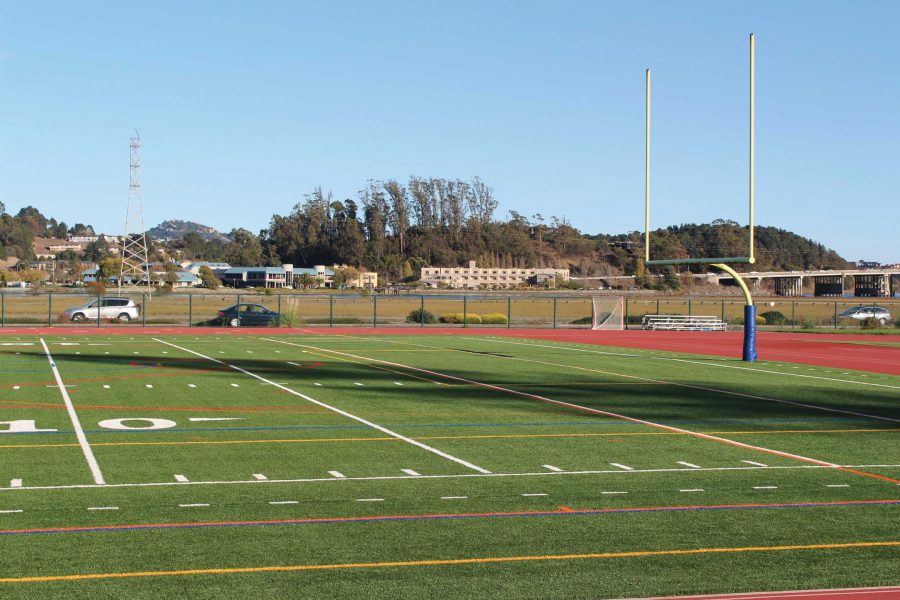The Tamalpais Unified High School District (TUHSD) began restoring the turf on the football field because its 10 year “life cycle” expired this past July. But a few days before the completion of the turf infill, parents voiced concern over the safety hazards that rubber turf may cause.
The replacement project was halted before the last quarter inch of turf could be placed on the field, and a plan to put in turf derived from cork was put into effect by the Tam Boosters.
Chris Kearney, President of the Tam Boosters, said, “There are significant health and safety concerns about the crumb rubber infill that make the cork infill worth it, in our and others’ opinions.”
Recent studies by the Connecticut Agricultural Experiment Station have shown that the rubber crumb turf in Tam’s previous field could have led to serious health effects. The studies identified benzothiazole, butylated hydroxyanisole, n-hexadecane, and 4-(t-octyl) as the four main chemicals present in the turf. These chemicals can lead to a wide variety of health effects. These include irritation of the respiratory system, systemic effects of the liver and kidney, and cancer.
The results of the study are not yet conclusive, but the speculation created concerns amongst parents, who made their opinions clear to former principal Julie Synyard in early July. In response, Synyard ordered for cork turf to be used the alternative playing surface on the field.
Currently, Tam Boosters is trying to raise money from the community to insert CoolPlay, cork composite material, onto the field. This insertion of cork composite turf will cost an additional $48,000 to the money that was spent this summer on the rubber crumb turf. The Mill Valley Soccer Club has generously committed $24,000 to the new project, and the Tam Boosters programs hopes that the rest of the expenses will be covered by donations from other members of the community.
“Our Board concluded that the project fell squarely within our mission of supporting Tam Athletics given the health and safety concerns that had been raised,” Kearney said. The CoolPlay cork material will be placed over the recently inserted three quarter inch rubber turf. This layer of cork composite will reduce the risk of harmful effects from the rubber crumb turf.
“I think that it is a good investment and will benefit many student athletes in many sports for years to come,” junior Callie Clifford, a member of the girls’ varsity soccer team, said. “The old turf was worn out and needed to be replaced.”
The CoolPlay system was designed with shock absorbent properties and is meant to take in heat and release less of it. With the cork turf, the field is expected to play 15-20 degrees cooler on hot days. This aspect of the turf could have a significant effect on athletes who will be active on the field.
“I think hot turf definitely has a huge impact on my game.” Junior Oliver Parkin, a member of the boys varsity soccer team, said. “Sometimes when your feet are burning it gets to a point where it is actually difficult to focus on your own game. So I definitely think that having cooler turf will benefit myself and the whole team this season.”
The cork composite is expected to be installed between November 2 and 9, right before the winter sports season begins. The field is used by many members of the Mill Valley community, but it is unlikely that the replacement project will interrupt the activities and usage of the field.
“I drive, bike, or run by that field daily, and it is always in use—we can feel really good about what we’ve done here with broad based funding and support,” Kearney said. “The benefits [of the new cork turf] will be shared by students using the field for PE, our Tam student athletes, and the countless members of the community who play there.”


